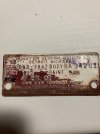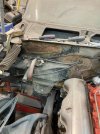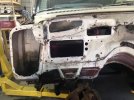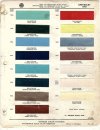Carl 1962
Well Known Member
Thanks for posting Jim, the first is a tuxedo black Impala sport coupe built 3rd week May 62 at Baltimore with red bench seat interior, AC and tinted glass.Don’t know if these are legible enough, here are two cowl tags. One is my 62 Impala black with red interior. One acc code looks to have been hit or flattened out?
Next is my 63 Bel Air blue with blue interior?
The second is an azure aqua Belair 2-door sedan built 1st week April 63 at Baltimore with aqua interior and a powerglide transmission.




 My Scheifer Pressure Plate was so stiff, it not only broke the bracket off the frame, it wore a groove on the Clutch Rod, where it went in to the Clutch Pedal hole. The stiff Clutch Pedal, probably has a little to do, with the knee problems I'm now having, on my left Knee.
My Scheifer Pressure Plate was so stiff, it not only broke the bracket off the frame, it wore a groove on the Clutch Rod, where it went in to the Clutch Pedal hole. The stiff Clutch Pedal, probably has a little to do, with the knee problems I'm now having, on my left Knee.
 Lol, I had a Scheifer pressure plate in my 62 back in the day. I remember my leg trembling at a stop lights if I didn't put it in neutral, the clutch pedal was so hard to push down it actually broke the pedal off of the pivot tube where it was welded on and the clutch pedal fell down on the floor. After that I replaced it with a more normal clutch, I think it was a ZOOM clutch.
Lol, I had a Scheifer pressure plate in my 62 back in the day. I remember my leg trembling at a stop lights if I didn't put it in neutral, the clutch pedal was so hard to push down it actually broke the pedal off of the pivot tube where it was welded on and the clutch pedal fell down on the floor. After that I replaced it with a more normal clutch, I think it was a ZOOM clutch. He told me, every time, I press the clutch pedal down, the car body, lifts up, off the body mount, rubber. On the driver's side.
He told me, every time, I press the clutch pedal down, the car body, lifts up, off the body mount, rubber. On the driver's side.
